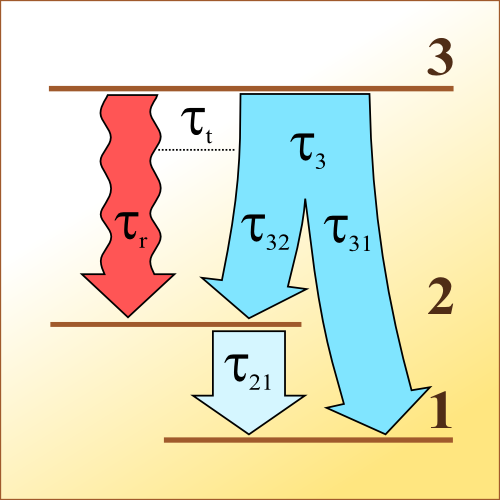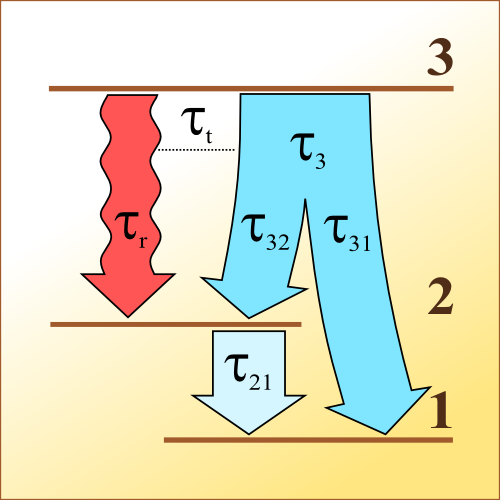Quiet cascade
Quantum cascade lasers are semiconductor lasers that emit in the infrared range. Unlike typical semiconductor lasers, where lasing is a result of recombination of electron-hole pairs across the band gap, quantum cascade lasers operate through intersubband transitions in a stack of quantum wells.
Until recently, it was thought that the fundamental frequency noise of all semiconductor lasers, including quantum cascade lasers, could be described through the Schawlow-Townes formula. This formula contains a systematic prefactor, the Henry linewidth enhancement factor, which accounts for refractive index variations from electron density fluctuations. While this formula describes line broadening in semiconductor lasers well, theory has predicted and experiments have shown that the Henry linewidth factor for quantum cascade lasers is nearly negligible. Hitherto the predicted noise level limits for quantum cascade lasers have been outside of our experimental reach. Recently, though, the search for the correct interpretation of the Schawlow-Townes formula for quantum cascade lasers has been invigorated by theoretical predictions that the fundamental linewidth is much lower than that of interband semiconductor lasers.
In results published in Physical Review Letters, Saverio Bartalini and co-workers at the Istituto Nazionale di Ottica (INO-CNR/LENS) in Florence and at the Second University of Naples, both in Italy, have shown that the linewidth limit for quantum cascade lasers is far below the limit set by the Schawlow-Townes formula when taking into account the spontaneous emission only. Through intricate experiments that required the building of a laser driver with unprecedentedly low noise levels, they showed that the Henry linewidth enhancement factor is negligible. In addition, they found that the linewidth depends on an effective coupling of the spontaneous emission with the lasing mode, and is reduced by the presence of nonradiative relaxation processes. – Daniel Ucko





